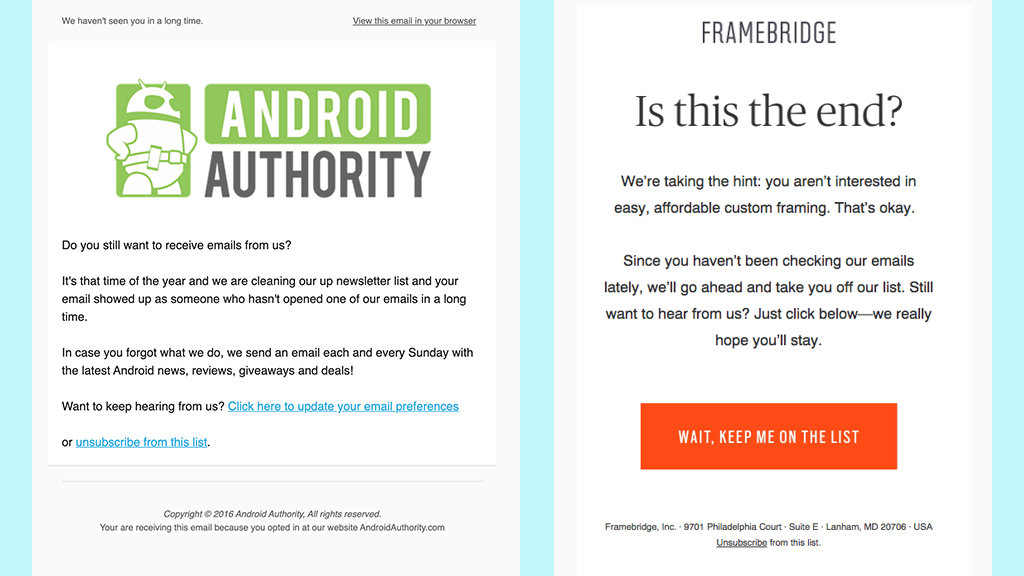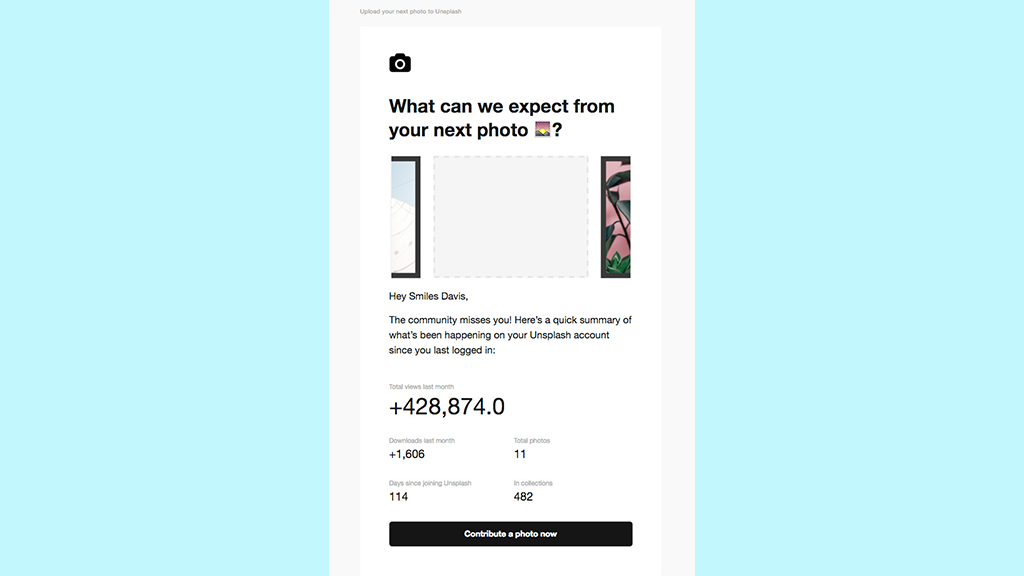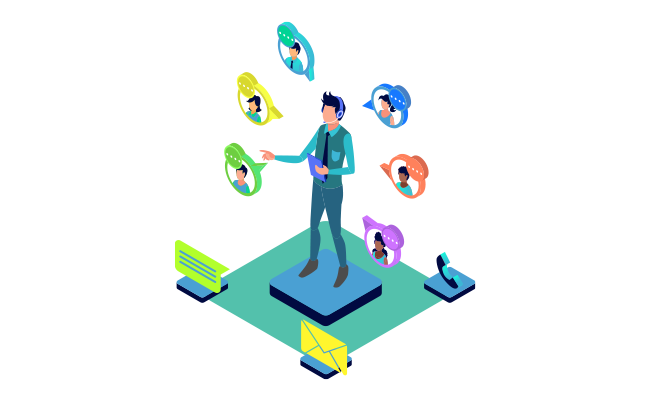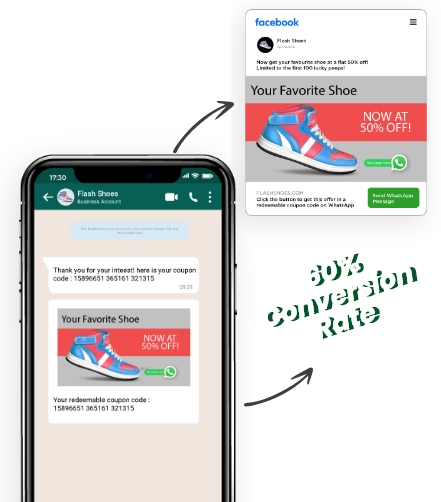Let’s face it: maintaining relationships with people is complicated and challenging. Dealing with human relationships is an art form. This is true in all aspects of life, including in the business world. The relationship with your customer is not a given one. They can walk away at any time and that’s where the importance of follow-up in customer service reclines.
Do you have what it takes to keep them around? What have you done to accomplish this?
Do you have the tools and know-how to follow-up with them and reignite the relationship?
In this article you will explore everything you need to know about re-engaging and following up with customers and practice best follow-up techniques.
Without further ado, let’s get started.

Why do customers go silent
What oftentimes fractures the relationship between a business and its customers is the quality of the products and service.
For instance, let’s say that you guarantee quick shipping times, however, this isn’t the case for some of your customers in certain geographical areas. Or let’s say they are simply not pleased with whatever it is they purchased from your website. Another reason for the disconnect could have to do with poor communication between your e-commerce store and customers. Implementing a dynamic logistics system that calculates the shortest route with multiple stops could significantly enhance delivery efficiency and customer satisfaction.
The break in communication could have occurred after they made their first purchase or after they subscribed with the intent of returning to the site again.
Broadly speaking, these are the key factors that will lead customers to disengage:
- You’ve not made it convenient for them to contact you.
- You didn’t give the customers what you promised.
- Your email content is irrelevant and repetitive.
- You are either sending them too few or not enough emails.
- Your email content is not personalized to your customers.
Be quick to resolve the problem
It’s worth mentioning that there’s not a large window of time in which to mend a broken relationship with customers.
The longer your customers have lapsed, the more difficult it becomes to get them back. What you need to do is map out a thorough plan to recover and follow up with customers. Speaking about solving problems, ensuring domain security, use DKIM check to create an image of a credible company.
Make it easy for your customers to contact you
Nothing frustrates customers more than the inability to reach you when they need it. To win the confidence and loyalty of customers, you must ensure 24*7 care and make it super easy for them to contact you.
While having a dedicated “contact us” page on your website is a must, you can take a few extra measures to let them connect with your support team instantly:
- Get a 24*7 business customer care number for your business and publish it on your website.
- Have a live chat widget installed on every page of your website so that they can initiate a chat with you right from your website
- Stay active on popular social media channels, including WhatsApp, Facebook messenger, and Instagram and Twitter DMs. Creating a digital business card with these contact details can also enhance accessibility for your customers. Digital-age customers love to connect with.
Being there for your customers on a real-time basis, you can win-back their confidence in you even if something goes wrong with your product or services. By making it easy for them to contact you, you show them that you really care about them.
To improve customer services and engagement and stay connected with their customers, some brands even go the extra mile by spending on social media advertising to buy engagement, like buying Instagram likes, sponsoring their Facebook Business Page to gain followers, etc.
Switch to automation
If you want to be methodical and timely when contacting customers, then you’ll need to either fully or partially automate the process of following up with them. To do this, you’ll have to prepare content you want to send to customers ahead of time and then make automated rules that lead to a particular action once a condition is met.
For instance, this could entail sending out an email with readymade content to customers who haven’t engaged with your business in 14 days. And you can send out another email in a week if they failed to click the link in the email.
Of course, you might need to take manual action at some point in the process. Let’s say that you’re trying to make a sale, and you’re in direct contact with the customers – in this case, you wouldn’t be able to depend on automation completely. However, it’s important to keep in mind that even under these conditions, you can still rely on automation for a decent amount of the workload by segmenting customers with certain attributes and then schedule and begin sending emails out.
To stay on the top of the game, the key is to find the right balance between personal and automated outreach.
If you’re trying to follow up with customers of your online store, then you’ll be able to rely on automation to get a major part of the job done. The only things you’ll need are:
- Clear goal: what you want to achieve;
- Segment customers accurately; and
- Set up rules to automatically engage with customers.
For instance, you need to know the best ways to follow up with customers examples who haven’t opened your newsletter emails in the past 6 months and didn’t purchase anything in the past 3 months. You’ll first need to segment these customers.
Once you have segmented those customers, you can differently target each segment with a personalized email:
- One email for customers who have not opened your emails in the past six months.
- Another email to gain the attention of those who have not purchased anything in the past three months.
Besides segmentation, timing is of the essence when it comes to having the most effective follow up with customers To do this, you’ll need more sophisticated, multi-layered segmentation to ensure that your targeting is highly accurate. That’s my next point of discussion.
Ensure accurate targeting
I don’t know about you, but I tend to ignore the majority of emails in my inbox. The reason being that I think they are irrelevant to what I’m looking for. In fact, while I might be an active customer of a certain business, I still find that their follow-up emails are repetitive and don’t fit my needs. This is because these emails are either too generic or aren’t reaching the correct targets.
As previously mentioned in this post, you must segment your customers accurately. That is the foundation not only for automation but also for targeting accurately and sending them personalized email. And you can even take it a step further to build several segments that target various kinds of inactive customers.
Let’s say that your customers fall into four different categories:
- Those who have failed to engage in your store for a month;
- Those who have not clicked on your newsletters;
- Those who don’t order very often; and
- Those who ignore your emails and haven’t made a purchase in awhile.
Once you have prepared these segmentations, then you can craft and send out emails that are more relevant for each category. The customers are more likely to be interested and come back if they receive highly relevant emails at the right time.
We haven’t gotten to the most important part yet: email content and the message you convey to re-establish communication. Even with the most sophisticated segmentation and automated plan, you still won’t have a great chance of winning customers back if your content and message is not up to the mark. So, besides segmentation, take your time to craft content that really resonates with your audience.
Remain optimistic
It’s no secret that negative headlines can be attention-grabbing and effective in marketing. However, you’ll need to avoid making your customer feel a sense of guilt. This article written by Whitney Rudeseal Peet expertly shows how two re-engagement emails vary in content and tone and why the more positive one is more effective.

While Android Authority reminds inactive customers of what they’re about and asks if there’s any interest in their content, Framebridge “flirts with dark patterns,” according to Peet. Of course, having fewer email open rates does not mean that customers are disinterested in your products and/or services.
While Android Authority reminds inactive customers of what they’re about and asks if there’s any interest in their content, Framebridge “flirts with dark patterns,” according to Peet. Of course, having fewer email open rates does not mean that customers are disinterested in your products and/or services.
While re-engaging with customers, refrain from making your subscribers feel guilty or leaving them afraid that they’re missing out on something, Instead, keep your tone positive and ask your audience how you can help them better.
Think like your customers
Remember: It’s not about you. It’s about them.
In the past, I’ve definitely gone wrong by bragging about myself and my business, assuming customers would automatically love it! While this sounds like an obvious no-no, you might not even realize you’re doing it. That is, if we were to follow the tenets of traditional marketing: “Glorify the product and elaborate its features like it is a gift from Eden.”
But the question that you have to ask yourself is: why would someone care about how great your product is if it’s not relevant to them? Wouldn’t it be great if you could convey how your wonderful product can help make their lives easier? This will help reel the customer in and elicit interest in your business.
When following up with customers, it’s important that you keep their needs and concerns in mind. To do this, you should have a good grasp on the value that your product adds to your customers’ lives and narrow your focus on that. This means that you can scrap a general product pitch that shows all features of a product or benefits of a service. Instead, concentrate on the features that help and excite your customers. And tell them how your product will make their lives easier. Remember to focus on them, not yourself or your product.
Create a multi-faceted campaign
When you want to follow up with customers, you should go beyond sending emails. It might be a good idea to reach out to customers via social media. Roughly 80% of all B2B sales leads collected via social media stem from LinkedIn.
Another great social media platform to begin interacting with customers is through Twitter. While it’s true that much work has been done in this area, there’s room for growth. We live in a world where social media users continue to grow exponentially, with many people in the world still not on the platforms. As you engage on Twitter, don’t forget to leverage strategies to gain Facebook followers as well, ensuring a comprehensive approach that captures a broader audience and maximizes your brand’s reach.
Your homepage might also be a great way to follow up with customers. It’s possible to make a good, lasting impression simply with a personalized web page. If you know that it’s an inactive customer who is visiting your website, then you can tailor the content on your homepage to meet their needs. Here are some ways to do this:
- Offer greetings and sentimental messages such as “We miss you!”
- Tell what’s been going on since they’ve been away.
- Gift coupons for limited-time discounts and offers.
- Provide bonus scores or other incentives to motivate them to return and get more.
To do the above, you’ll need an automated personalization marketing tool like Growmatik. By using Growmatik’s “Website personalization” feature, you’ll be able to easily send the customers who’ve been away for a period of time to a page that has content tailored to their needs.
Catch them up on what they’ve missed
You’ve probably heard of FOMO – or Fear of Missing Out. If you haven’t, it’s the natural human urge to be included in the group. You can use this notion to appeal to inactive customers and bring them back to your business.
One way to go about using FOMO in your marketing is by giving them updates on what’s been happening with your brand or what they’ve been missing out on. They will find this appealing, and they’ll be more willing to click on a link embedded in the email.
For instance, in the following example, Unsplash perfectly used the concept of FOMO to get customers to re-engage with their brand:

Add some personalization
One of the things that customers hate the most is knowing that they are being marketed to. Thankfully, it’s not too difficult to sidestep this – simply get personal and tell the truth. While personalization demands a great deal of time, the amount of effort you put in will pay off in the long run.
To begin with, include the names of your customers in emails or newsletters to get their attention. You can do this by using dynamic tags in your newsletter templates. At an advanced level, you can send highly personalized emails based on customers’ attributes like personal details, shopping behavior, in-site behavior, etc.
Be persistent – but not too much
If the customers you’re following up with haven’t responded to you, then keep trying. Wait a few days and then try again with your best possible follow-up email. Remain optimistic and attempt to give more info so your offer can be more relevant to them. The end of your email must have a clear request. For instance, you can insert a link to schedule a phone call, a “reply back” button to keep up with communication, or a click-to-call button to let them connect with you on call in a click.
It’s important to remember that while persistence in sales is a must, it can easily backfire and annoy the customers that you’re trying to win back. The aim here is to make your inactive customers interested again and to reignite your relationship. So don’t rush, remain polite and continue working with different mediums if one does not pan out.
Wrapping up
Most people attempt to re-engage their customers through automated and repetitive emails and phone calls. However, you should go beyond this traditional approach to ensure effective follow up with customers. Your attempts to reach out should be valuable for your customers and show that you understand what they need and how you can provide a solution. One way to achieve this level of customer engagement is by utilizing a cloud call center solution.
Consider partnering with a reputable IVR services provider like MyOperator to enhance your customer engagement strategies further. An IVR (Interactive Voice Response) system can be integrated into your cloud call center software, enabling automated yet personalized interactions with your customers
And I’ve got one more tip for you – while writing a follow-up email, begin with the question: “How can I transform this hesitant customer into my most loya customer?”





